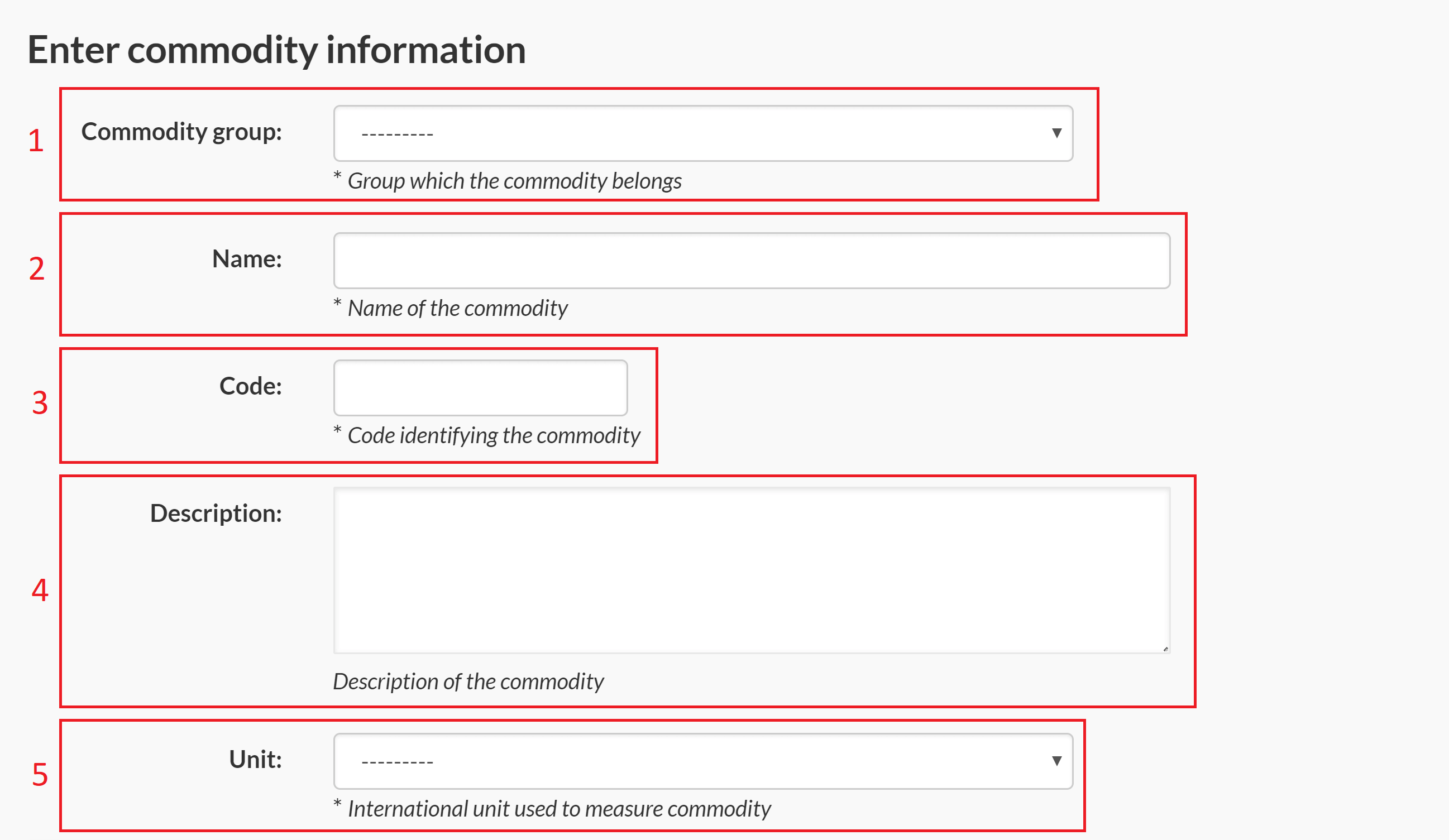Enter Commodity Information Fields
This section details each of the fields that are available when Setting Up Global Commodities in the Create new commodity page. It details what you can enter for each field, and provides examples.

- Commodity Group (Mandatory): Choose a commodity group from the drop down list of the available commodity groups. The available commodities are described in the following table.
Commodity Group Description CER Cereals OIL Oil DAI Dairy Micronutrients Fortified Blended Food LNS Small Quantity FRU Fruit BEV Beverages MIX PUL Pulses FSH Fish TUB Tubers Other Anything that does not belong in one of the other commodity groups. MEA Meat VEG Vegetables EGG Eggs SPC Milk Milk based products CSH Dry Food Dried foods Fresh Food Cash Dry fish NonFood Items Therapeutic Food Medicine - Name (Mandatory): Enter a unique name to identify the commodity here. You can name a commodity for a generic commodity within a commodity group, e.g. vegetable oil. Alternatively if you have a partnership with a company that is providing a specific product, you may use the product name instead.
- Code (Mandatory): Enter a code to identify the commodity here.
- Description: Enter a description of the goods here. You can provide more details here about the commodity as required.
- Unit (Mandatory): Choose the standard unit of measurement used for measuring the commodity from the drop down list. The available units are described in the following table.
Unit Description Kilogram Used for dry commodities that are measured by weight such as flour, fruit, and vegetables. Litre Used for liquid commodities that are measured by volume such as oil and milk. Unit Used for commodities not covered by any other units. Carton Used for packaged commodities such as tins of tuna or pasta. The weight of packaged goods may vary from location to location. If you use kilogram as the unit, you may have situations where you are required to give someone half a tin of tuna. Carton is used to avoid these situations. Currency Used for cash assistance. Sachet Used for sachet commodities such as nutritional supplements or powdered medicine. Usually, the sachet is the standard amount that should be used for a single dose. Bottle Used for liquid commodities that are always in bottles such as medicine.
Examples
Generic commodity
In this example, we show what values you put in each field to create a generic Vegetable Oil commodity.
| Field | Value | Notes |
|---|---|---|
| Commodity Group | OIL | We choose OIL as vegetable oil is a type of oil. |
| Name | Vegetable Oil | For generic commodities, the name is just the general term for that group of commodities. This allows it to be used for any type of vegetable oil from any brand. |
| Code | ||
| Description | Since this is a generic commodity, it does not require a description. | |
| Unit | Litre | Vegetable Oil is a liquid. It will be distributed in significant quantities. While it can be distributed as bottles, people may also be providing their own containers and getting a measured amount from their Point of Service. AS such the most appropriate unit is Litre. |